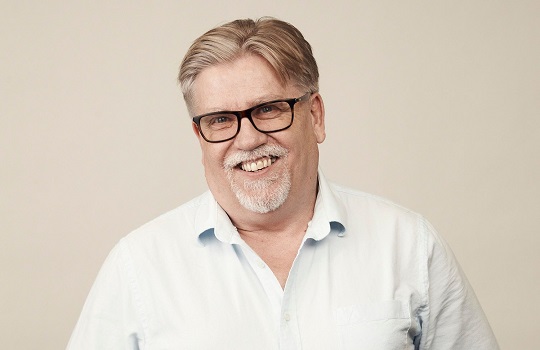
“We were very fortunate at 86 400, being built from the ground-up in the cloud… that we were able to transition the entire company to working remotely within a day.”
A trailblazer even among fellow neos, 86 400 has emerged as a foremost innovator among an increasingly crowded field of digital banking upstarts. Today, leveraging its Customer Experience Engine (CXE), it is among the first banks anywhere to provide customers with an all-in-one view of their financial assets held across almost any institution in Australia.
FST speaks with Brian Parker, chief information officer at 86 400, on reaping the benefits of its cloud-only foundations, the breakneck speed of its Covid-19 response, and key takeaways from its contribution to Australia’s Open Banking pilot.
FST Media: As a nimble, digital-only proposition, 86 400 is constantly evolving its tech infrastructure to meet rapidly changing market demands. Walk us through your technology priorities over the next 12 to 18 months.
How is 86 400 adapting its digital agenda to keep pace with the volatile state of business today, particularly in the midst of Covid-19 shutdowns?
Parker: Despite the impacts caused by Covid-19, our customer base continues to grow as consumers seek to explore the experience we can deliver to enable them to better understand their finances. We are continuing to invest in capabilities that make us unique, with a focus on data science that will enable us to deliver insight-driven banking.
Internally, the impact of Covid-19 on our ability to deliver value has been minimal, as we designed the bank from the start to be able to run from anywhere where an internet connection was available and, while our ways of working have changed, our productivity has not dropped.
The next 12 to 18 months will see yet another way of working evolve as we move to more flexible work arrangements: this will see some of our staff allowed to work in our office while others will work remotely.
FST Media: How do you feel 86 400 stands out not only from traditional Australian banks but also among other emerging neos?
Parker: The way we have set up our technology and the team we have built gives us a competitive advantage. We have delivered seven products in seven months and we plan to maintain that speed, meaning we can execute and respond to customer needs at a faster pace than anyone else in the market.
Secondly, we have set ourselves up to operate at a fraction of the cost of other banks and have already proven we can scale quickly and maintain great customer service.
Finally, helping Australians take control of their money is at the core of everything we do. Through our connected accounts feature, we’re giving Australians a view of all their money from close to 100 different banks, not just the money they have in their 86 400 accounts. We’re also giving them insights by showing them their upcoming bills and subscription payments and letting them know how they’re tracking with their savings.
FST Media: 86 400 was one of 10 organisations chosen to participate in the ACCC’s Consumer Data Right pilot as a data recipient. What did this pilot reveal to you about the industry’s readiness for Open Banking, and what challenges can we expect as Australia pushes ahead with the regime’s roll-out?
Parker: As a whole, we all have different views of what Open Banking is. In other jurisdictions, Open Banking is managed by industry bodies that are focused on banking and payments. However, in Australia, Open Banking is being managed by the ACCC and will extend across other sectors to provide consumers access to the data they hold in banking, telcos and utilities. The scope of CDR is currently limited to read-only access to selected data sets. Over time we expect the data set to become richer; however, it is unlikely to extend to support write access any time soon.
When we joined the test group in September 2019, we, along with other members of the testing group, were focused on an expected launch in February 2020. It soon became apparent the program was more complex to deliver than projected at that time, and timelines have been extended.
To the credit of the ACCC, they have addressed many of these issues to make it easier for new Data Recipients to join the scheme and make it a success.
FST Media: What to you defines success in a fully functioning ‘open’ ecosystem – both from the perspective of industry and consumers?
Parker: The real benefit of CDR may not emerge for several years when all banks are participating in the scheme and providing access to all of the accounts consumers hold with their banks. This will allow consumers to better understand the value they are receiving from their banks and provide an ability to move between banks that provide a better product or service.
New services will emerge to reduce friction by providing access to data in real-time to make credit decisions and reduce fraud. From our perspective, success will be measured on the number of customers that connect the accounts they hold with other financial institutions using CDR technology and use the experiences we offer to view and manage their money.
FST Media: Following an impressive capital raising effort, 86 400 remains well on track to hit an estimated 500,000 customer accounts and a mortgage book valued at $2 billion by the end of 2021. As CIO, tell us how your continued investment in progressive digital transformation and innovation will enable further growth.
Parker: 86 400 was built entirely in the cloud from day one, which will help us scale as well as easily maintain our technology and platforms. We also, from day one, built 86 400 as a hybrid app – meaning we don’t need to maintain a codebase for an iOS app and another for our Android app. This allows us to bring features and products to market with increased speed. It also makes general app improvements and maintenance easier and means that we’re able to make the best use of our finite development resource.
FST Media: Speaking with FST last year, 86 400 chair Anthony Thompson alluded briefly to the company’s in-house developed Customer Experience Engine (CXE). How has this unique analytics-backed technology evolved over the last 12 months and in what ways has it advanced 86 400’s CX offering?
Parker: Our Customer Experience Engine (CXE) is at the heart of our solution and allows us to offer a new type of bank that is able to collect information from many data sources to provide a customer with a personal view of the way they manage their money, whether held in an 86 400 deposit account or with another financial institution.
Over the last year we have migrated the database that supports the CXE from [Apache] Cassandra to an RDS [Relational Database Service] managed by AWS. This has enabled us to both increase velocity when developing new features and enhance our ability to integrate additional data sources. Our customers will soon see the benefits of this work as we share this new functionality via the 86 400 App.
FST Media: As Covid-19 irrevocably transforms corporate working life, how do you feel leaders in financial services can best manage this new remote working reality? Further, what will the future of work look like once recovery begins?
Parker: We were very fortunate at 86 400 – being built from the ground-up in the cloud and also already using online project management tools and Slack for communication – that we were able to transition the entire company to working remotely within a day.
It’s crucial as leaders that we’re supporting our teams and encouraging regular communication to emulate a face-to-face office environment as best as possible.
It’s hard to predict what the future of working will look like as cities and countries start opening up post-Covid-19 closures and renegotiating remote working arrangements. But I think we’ll be seeing a lot more remote working opportunities arise as a result of this period.
FST Media: Taking a peek into the crystal ball, what do you envision the ideal banking experience will look like in five years’ time?
Parker: In five years’ time I would expect Open Banking to become the new norm. By then, all banks will enable their customers to share their data with others where consent has been provided, allowing them to better understand the products and services they are consuming.
This will lead to better outcomes for consumers, reduce the dominance of the big four, and create opportunities for new entrants to deliver new and innovative solutions by harnessing the value embedded in the data. ◼





